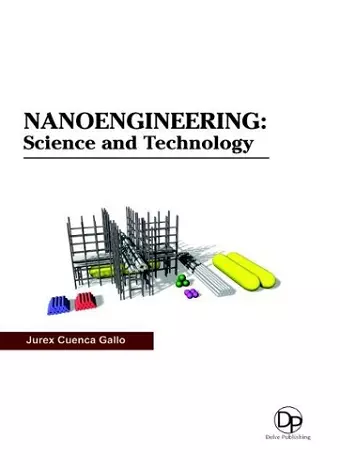Nanoengineering
Science and Technology
Format:Hardback
Publisher:Delve Publishing
Published:30th Nov '16
Should be back in stock very soon

Nanoengineering is the practice of engineering on the nanoscale. It derives its name from the nanometre, a unit of measurement equalling one billionth of a meter. Nanoengineering is largely a synonym for nanotechnology, but emphasizes the engineering rather than the pure science aspects of the field. The application of nanotechnology to biological systems has great potential for improving health care, food science, homeland security and energy production. Nanotechnology can be thought of as the design and synthesis of functional systems at the molecular level, where sizes are measured in nanometers – a billionth of a meter. Nanotechnology has had profound effect on material science, from newer computer processors based on nanofabrication that run faster, to stronger and safer construction materials. The field of biology is naturally ripe for nanotechnology implementation, as the building blocks of our genetic code and the proteins critical to all living systems are literally molecular machines. The effect of nanotechnology on the food sector is expected to be wide-ranging. Researchers and industry experts envision better-quality and safer foods with enhanced nutritional and health benefits through nanotechnology. It is critical for food nanotechnology applications to demonstrate superior benefits that outweigh risks to ensure their acceptance by the food industry and the public. Limited information on the health and environmental risks associated with nanosize food materials has hampered immediate adoption in food applications and has triggered public interest and concern regarding the associated health risks of nanomaterials for food use. With the right science-based information on associated risks and benefits, however, the future of nanotechnology in foods is expected to be bright. Nanotechnology provides a flexible and powerful platform to address infections and drug-resistant microbes. Infections that result from surgery represent a significant burden on limited health care resources. Many musculoskeletal surgeries, such as total joint replacement and trauma repair, involve the use of permanent or temporary implants that can provide vectors for infection. As the demand for such surgery increases from an aging population with traumatic injuries, the incidence of subsequent complications increases as well. Besides being small and allowing more transistors to be packed into a single chip, the uniform and symmetrical structure of nanotubes allows a higher electron mobility (faster electron movement in the material), a higher dielectric constant (faster...
ISBN: 9781680959109
Dimensions: unknown
Weight: unknown
263 pages